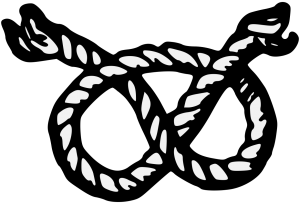Get ready Hub Nation – because it’s time to dive a bit deeper!
But first a note of caution.
Here at The Hub we appreciate the importance of junior golf rankings but do not believe rankings are either infallible or all important. Just think about it. How can you put tens of thousands of growing, developing, changing youngsters into crisp and tidy packages? Very imperfectly! If at all. Reminds us here at The Hub of a great quote by the author Alan Watts:
“The more one studies attempted solutions to problems….the more one has the impression of extremely gifted people wearing out their ingenuity at the impossible task of trying to get the water of life into neat and permanent packages”
Perfectly imperfect. Like life in general.
Keep in mind though that certain college coaches will look at rankings when evaluating you as a prospect. That makes them a reality. And on that basis alone it’s key to understand how they work.
And your Hub friends are here to help.
So, let’s get started with six practical pieces of advice to getting junior golf rankings right:
1. Understand the major U.S. ranking systems
The Big Daddy’s of U.S. junior golf rankings are (1) Junior Golf Scoreboard (2) AJGA Rolex and (3) GolfWeek. In our experience, these are the main rankings systems that college coaches take into consideration when evaluating prospects.
For example, when a top Division I college coach is evaluating you as a candidate, they’ll want to know your Junior Golf Scoreboard and AJGA Rolex ranking. Take note!
2. Understand how to get ranked
To get a Junior Golf Scoreboard ranking, you will need to play in a minimum of four 36-hole JGS-ranked events in the last 365 days. Considering less than four ranked events? Then no soup ranking for you (apologies to all the non-Seinfeld fans)!
To get an AJGA Rolex ranking you’ll need to play in (a) AJGA events and/or (b) Top national junior golf tournaments. See below for the events that qualify for the AJGA system. Look them over carefully – this is also a good starting point to understand some of the top National junior golf tournaments in the country!
AJGA Events
- Invitationals
- Opens
- Senior Events
- Junior Golf Hub Preview Series
- ACDS Junior All-Star Events
Select Non-AJGA Events:
- Boys Junior PGA Championship (Boys)
- Bobby Chapman Junior Invitational (Boys)
- Bubba Conlee National Junior
- Girls Junior PGA Championship (Girls)
- IMG Academy Junior World Championship
- Joanne Winter Arizona Silver Belle Championship (Girls)
- Jones Cup Junior Invitational (Boys)
- Junior Invitational at Sage Valley Golf Club (Boys)
- Junior Orange Bowl International Golf Championship
- Kathy Whitworth Invitational (Girls)
- Scott Robertson Memorial
- Southern Junior Championship (Boys)
- Trusted Choice Big I National Championship
- U.S. Girls’ Junior Championship (Girls)
- U.S. Junior Amateur Championship (Boys)
- Western Junior Championship (Boys)
Lastly, to get a GolfWeek ranking you’ll need to play in five GolfWeek-ranked events over the last 365 days.
3. Actively seek out ranked events
As we mentioned in our blog post, How to Create a Winning Tournament Schedule, we recommend that you actively seek out either Regional or National ranked events when setting your tournament schedule for the year. Don’t leave this to chance! Carefully consider the ranking of the events you put on your calendar and whether you will meet the minimums above.
4. Don’t play it too cute
Occasionally we see players so intent on ‘optimizing’ their ranking that they neglect vital development opportunities, like playing in competitive tournaments because the ‘strength of field’ is not up to par. In our humble Hub opinion, this is penny-wise and pound-foolish. Prioritize your long-term development and the thrill of competition first and resist the urge to play it too cute.
5. Don’t tie yourself in knots
We could offer a B.S. degree in junior golf rankings. Have a spare 10 hours? We can go deep into all the intricacies of the strength of field calculations, how points are set in the Rolex rankings, how GolfWeek’s mathematical model works (ok, technically we don’t understand that one either).

At the heart of it though, rankings are simple. To get ranked, play in ranked events. To improve your ranking, play well in ranked events. There are lots of subtleties for sure, but the underlying quality of your game is driving the bus!
6. Make rankings your servant, not your master
Consider this. A ranking is just a piece of information. It shows how you stack up against certain players in your state, class or country. Like all pieces of information, it can be put to constructive use.
For example, if your ranking is not where you want it, time to get to work! This is a signal that you may need more skills. Or a clearer plan. Or more focused practice. Or to work on your movement quality and athleticism.
That’s great information to know! Particularly if you learn it early, rather than later. Now you can get on with setting a clear path of long-term development that will move you towards your goals. That way you will make rankings your servant, not your master. That’s what we’re talking about!
We hope this guidance was helpful.

Have you set your tournament calendar for the year yet? Come to The Hub and use our Tournament Finder for Free! Find top-ranked junior tournaments all over the United States and add them to your custom calendar. Get ready for a great year!


